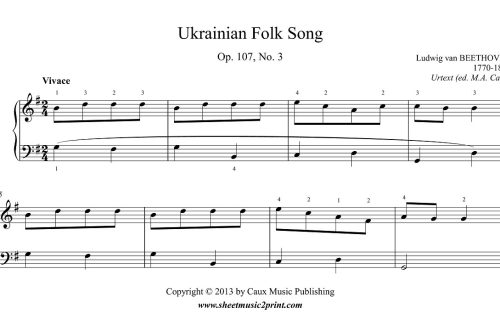
A new way to build vintage frets
Contents
Many find it difficult to remember which steps rise or fall in different modes. Meanwhile, it is much easier to build any mode, without remembering it at all.
First, let’s listen to how the frets from the note sound. to:
And now let’s see how the notes of these modes are located in the space of multiplicities (PC).
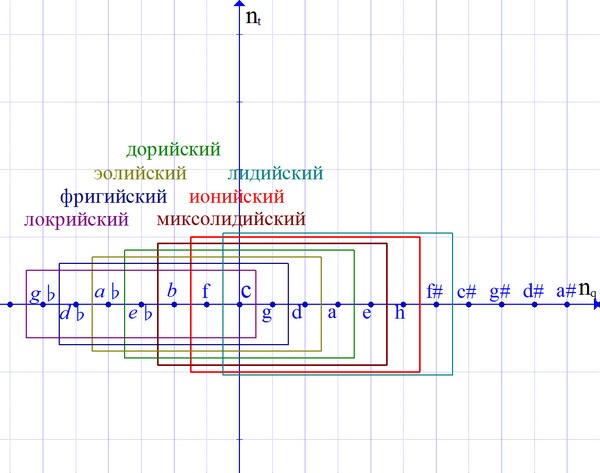
You can notice two things:
- the order of notes on the horizontal axis in the PC coincides with the order of notes on the fourth-quint circle: to the right is the sound one fifth higher, to the left – one fifth lower;
- each fret is a rectangle of 7 notes. Several notes are taken to the left of the note to, the rest are on the right.
The last column in the table shows exactly how many notes on the left you need to play in order to get one or another mode. By the way, the order of the numbers in this column is also easy to remember: first all the odd ones (1, 3, 5) go, and then all the even ones (0, 2, 4, 6).
If we need to build a fret not from to, and from any other note, we simply build a rectangle around it.
For example, we need to build Phrygian mode from F-sharp. There is nothing easier.
- We are looking for on the axis F sharp:
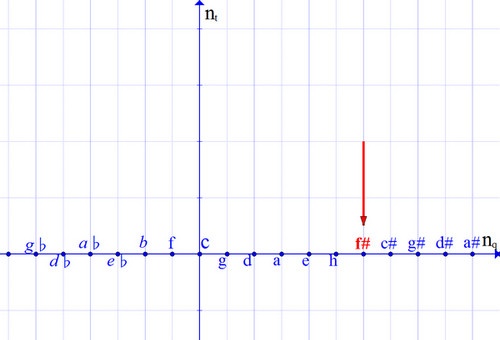
- Using the first table, we determine how many notes on the left to take. In the case of the Phrygian mode, this is 5.
- We build a rectangle of 7 notes: 5 notes on the left, itself F sharp, and one on the right.
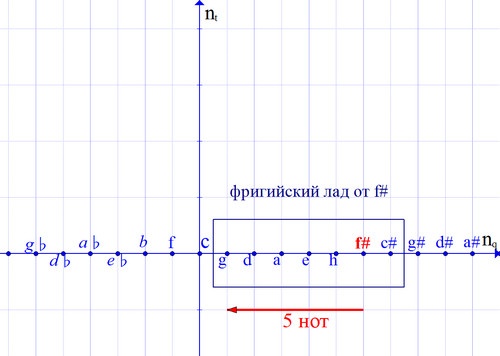
Lad is ready!
Some theory
In other words, why does it work this way?
Why does the horizontal axis in PC look like a circle of fifths?
Let’s remember how the PC was built.
On the horizontal axis, we plotted duodecyma by duodecyma. A duodecima is a compound interval, a fifth plus an octave, and since shifting by an octave does not change the name of the note, we get the same order of notes as on the circle of fourths and fifths.
Note that on this axis, sharp notes are on the right, and flat notes are on the left.
What are frets?
There are various designations for these musical systems: church modes, folk music modes, natural modes, Greek, Pythagorean, etc. It is these modes that we are talking about. In modern literature, both major and minor, and symmetrical modes (Yavorsky, Messiaen) and almost any set of notes that was chosen for a particular work are often called frets. These “modes” should be distinguished from the modes of folk music: the principles by which they are built, as a rule, vary greatly. We will talk in detail about the differences between modern tonality (major and minor) and the old mode in the next article.
All modes belong to the so-called diatonic systems.
Most likely, similar (or exactly the same) systems existed in music in the prehistoric era, but they have been recorded in writing, at least since ancient Greece.
If you need an authentic performance of modal music, then you need to play it not in the temperamental tuning we are used to, but in the Pythagorean (it is in it that the scales in the first table are reproduced). The difference in their sound is microchromatic, only professionals with well-trained ears can notice it. However, this difference is very significant from the point of view of building musical systems.
Why are the frets so arranged in the PC?
In ancient times, musical systems were built using only two basic intervals – the octave and duodecim, that is, by simply dividing the string into 2 and 3 parts. You can read more about this in the article “Buildings in the history of music”.
Let’s try to restore how it happened.
To begin with, the composer (or musician) chose one sound, for example, the sound of an open string. Suppose it was the sound to.
By dividing by 2, that is, shifting by an octave, we will not get new notes. Therefore, the only way to get new notes is to divide (multiply) the length of the string by 3. All the notes that we get in this way will be located on the horizontal (duodecimal) axis in the PC exactly as shown in Fig. 1.
It turns out that fret is just the 7 nearest sounds.
You can choose, in addition to the original one, 6 sounds by duodecims up (on the left of the chart), you can choose 6 sounds by duodecims down (to the right of the chart), or some of them can be up and the rest down. All the same, these will be 7 sounds that are harmonically closest to each other.
What else can be determined using a PC?
In PC, for any fret from any note, we immediately see how many accidentals we will have. Moreover, we see exactly which notes will be altered, and whether they will be raised (sharp) or lowered (flat).
In our example with the Phrygian mode from f# there will be 2 accidentals, these will be two sharps, and we need to raise the notes F и to.
You can also solve the inverse problem: if we know from which note we are building a fret, and how many accidentals are in it, then by drawing a rectangle in a PC, we will determine what kind of fret it is.
Even with the help of a PC, you can easily get the scale of any fret. Of course, you can simply write out all the notes from the rectangle, and then arrange them in ascending order, but you can also do this graphically.
The rule is simple – jump through one.
For example, let’s take the Ionian mode from salt.
The construction algorithm is the same: we are looking for salt, set aside as many notes to the left as indicated in the table (in this case, 1), build a rectangle of 7 notes.
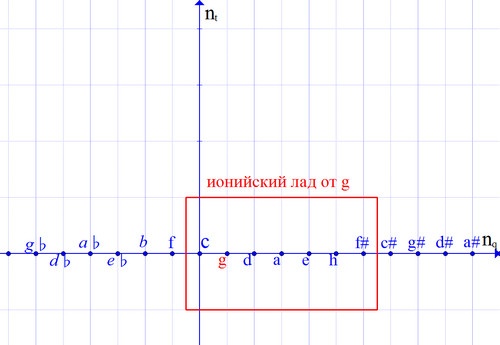
Now let’s build the scale.
We start with the original (letter designation – g) and jump to the right through one note.
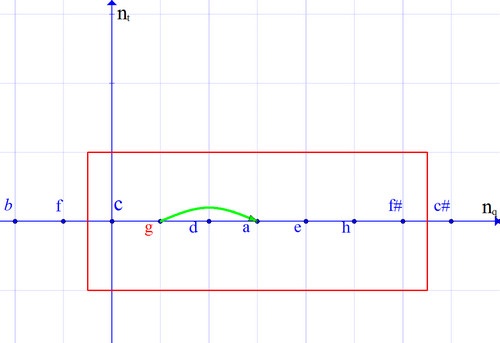
When we rest against the right edge of the frame, we continue the countdown from the left.
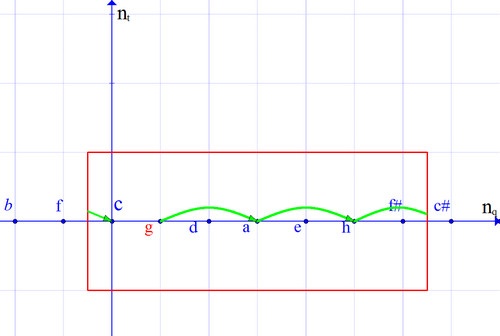
And we continue jumping through the note until the notes run out.
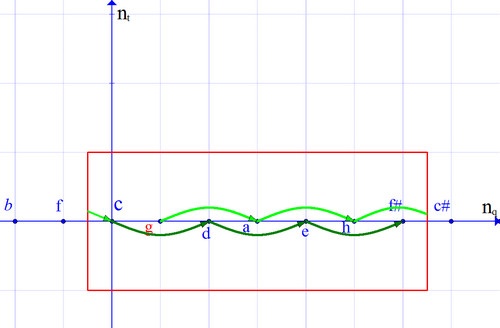
Following these arrows, we get the gamma: g – a – h – c – d – e – f#.
This method will work for any fret from any note.
Let us take a seemingly confusing case – the Aeolian mode from to.
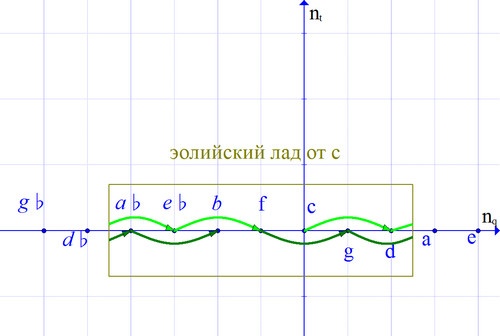
As you can see, the same principle works in it, you just have to go over the right edge several times. Gamma, if you go through the arrows, will be: c – d – eb – f – g – away – b.
The PC turned out to be a very handy thing for answering the question: what are frets and why are they built that way? And from a practical point of view, it is much easier to determine the number of sharps and flats from a drawing than to memorize them for each fret from each note.
And whether the PC will cope with various types of major and minor, we will find out in the next article.
Author — Roman Oleinikov




